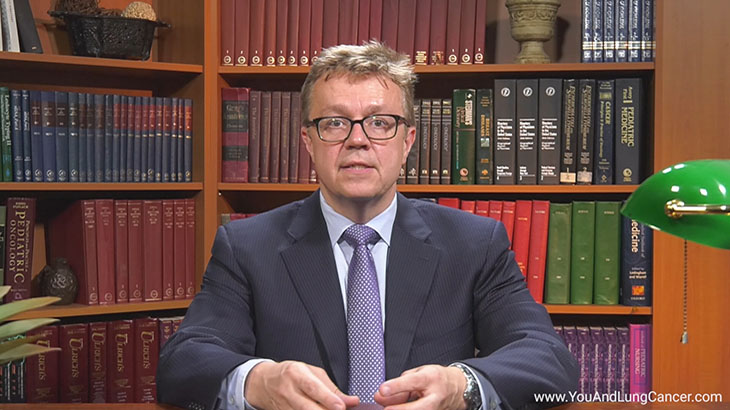Slide Show - Staging of Lung Cancer
Click here to take our SURVEY
Your feedback is important to us! We will use your feedback to develop future areas of content about lung cancer which will help other patients, caregivers and families.




Lung cancer staging is a system that describes the overall size and spread of the main tumor.
Doctors need staging information to plan a patient’s lung cancer treatment.
In Stage 0 the cancer is only in the top layer of the cells lining the lung’s air passages. This is also called carcinoma in situ.
Stage IIA could also mean that the cancer is in 1 lung and the main tumor is slightly bigger - 5 to 7 cm wide - but hasn’t spread to lymph nodes or elsewhere.
Stage IIB could also mean that the main tumor is wider than 7 cm and has not spread to lymph nodes or elsewhere.
Information learned from surgery can be added to the results of the clinical stage and can reclassify NSCLC as being the pathologic stage.
Since many people with NSCLC do not have surgery, their cancer is only classified as clinical stage.In limited stage the cancer is only in 1 side of the chest and it is small enough to be treated with a single radiation field. About 1 of 3 people have limited stage when first diagnosed with SCLC.
In extensive stage the cancer has spread through the lung, to the other lung, to lymph nodes on the other side of the chest, or to other parts of the body (including, the bone marrow, and the fluid around the lung). About 2 of 3 people have extensive stage when first diagnosed with SCLC.Since survival estimates do not predict what will happen to any one person, it is best to talk with your doctor to understand your individual situation and options.
Click here to take our SURVEY
Your feedback is important to us! We will use your feedback to develop future areas of content about lung cancer which will help other patients, caregivers and families.




This educational activity has been developed by A Breath of Hope Lung Foundation and Mechanisms in Medicine Inc.
This activity is supported by educational grants from AstraZeneca Pharmaceuticals, Bristol-Myers Squibb Foundation Inc., Bristol-Myers Squibb Grants and Giving, Foundation Medicine, Genentech, Jazz Pharmaceuticals, Merck Sharp & Dohme LLC, Neogenomics, Novartis, Pfizer, and Takeda Oncology.
This website is part of the Animated Patient® series developed by Mechanisms in Medicine Inc., to provide highly visual formats of learning for patients to improve their understanding, make informed shared decisions, and partner with their healthcare professionals for optimal outcomes.